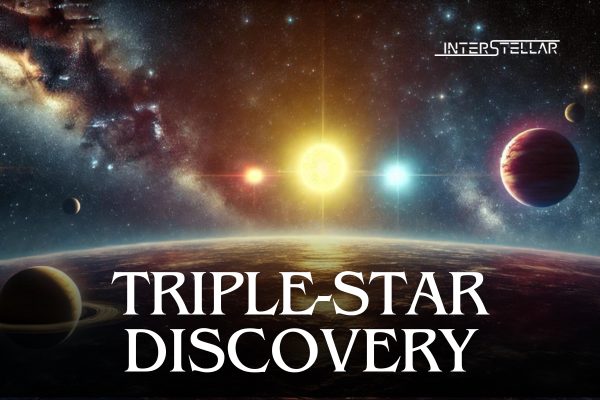TESS Discovers Record-Breaking Triple-Star System with Extremely Tight Orbit
NASA’s Transiting Exoplanet Survey Satellite (TESS) has detected a new record-breaking triple-star system, designated TIC 290061484. Located around 5,000 light-years away in the constellation Cygnus, this system has such a compact configuration that it could fit comfortably within the distance between the Sun and its closest planet, Mercury.
A Remarkably Compact Star System
TIC 290061484 comprises two stars that orbit each other every 1.8 Earth days, while a third star orbits this pair every 25 Earth days. This tight configuration makes it the most compact triple-star system discovered to date. The previous record-holder, Lamba Tauri, held the title since 1956, with its third star taking 33 days to orbit its inner twin stars.
The discovery was made possible by TESS, which detects starlight variations caused by stars eclipsing one another from Earth’s perspective. The unique edge-on configuration of this system allows scientists to measure the stars’ orbits, masses, sizes, and temperatures. This data provides insights into how such compact systems form and how they might evolve over time.
Stability and Future Evolution of TIC 290061484
The research team believes that TIC 290061484 is highly stable due to its stars’ nearly aligned orbits. If the stars’ orbits were tilted, their gravitational influences would destabilise the system. However, this stability is temporary and expected to last only a few million years. As the twin stars age, they will expand and eventually merge, triggering a supernova explosion in 20 to 40 million years.
Fortunately, no planets have been found close enough to these stars to be affected by this future event. Astronomers think that the stars formed together through the same growth process, preventing planet formation in the system’s inner regions. There is a possibility that a distant planet could orbit the entire trio as if they were a single star, but no such planet has been detected yet.
Contributions from Citizen Scientists and Advanced Technology
The discovery was a collaborative effort involving both professional astronomers and citizen scientists who initially met through the Planet Hunters project. Using machine learning, the team analysed vast amounts of TESS data to identify eclipsing patterns, which were then verified by the citizen scientists.
TESS’s ability to capture wide-field views of the sky made the initial detection possible. However, researchers believe many more such systems remain undiscovered. NASA’s upcoming Nancy Grace Roman Space Telescope, set to launch in 2027, will provide even more detailed observations. Roman will offer high-resolution images that could reveal additional tightly-bound star systems, potentially setting new records for compact multi-star orbits.
The Promise of the Nancy Grace Roman Space Telescope
While TESS offers broad coverage, Roman will have a “zoomed-in” view of the cosmos. An area covered by just one pixel in a TESS image will be represented by 36,000 pixels in a Roman image. This high resolution will allow astronomers to peer deep into densely packed star regions at the heart of the Milky Way.
Roman’s mission will include monitoring light from hundreds of millions of stars, which could help detect new triple-star systems with even shorter outer orbits. The telescope might even reveal star systems with four or more stars orbiting each other, a phenomenon that has yet to be confirmed.
“We’re curious why we haven’t found star systems with even shorter outer orbital periods,” said Brian Powell, a Goddard data scientist involved in the study. “Roman should help us find them and bring us closer to figuring out what their limits might be.”


